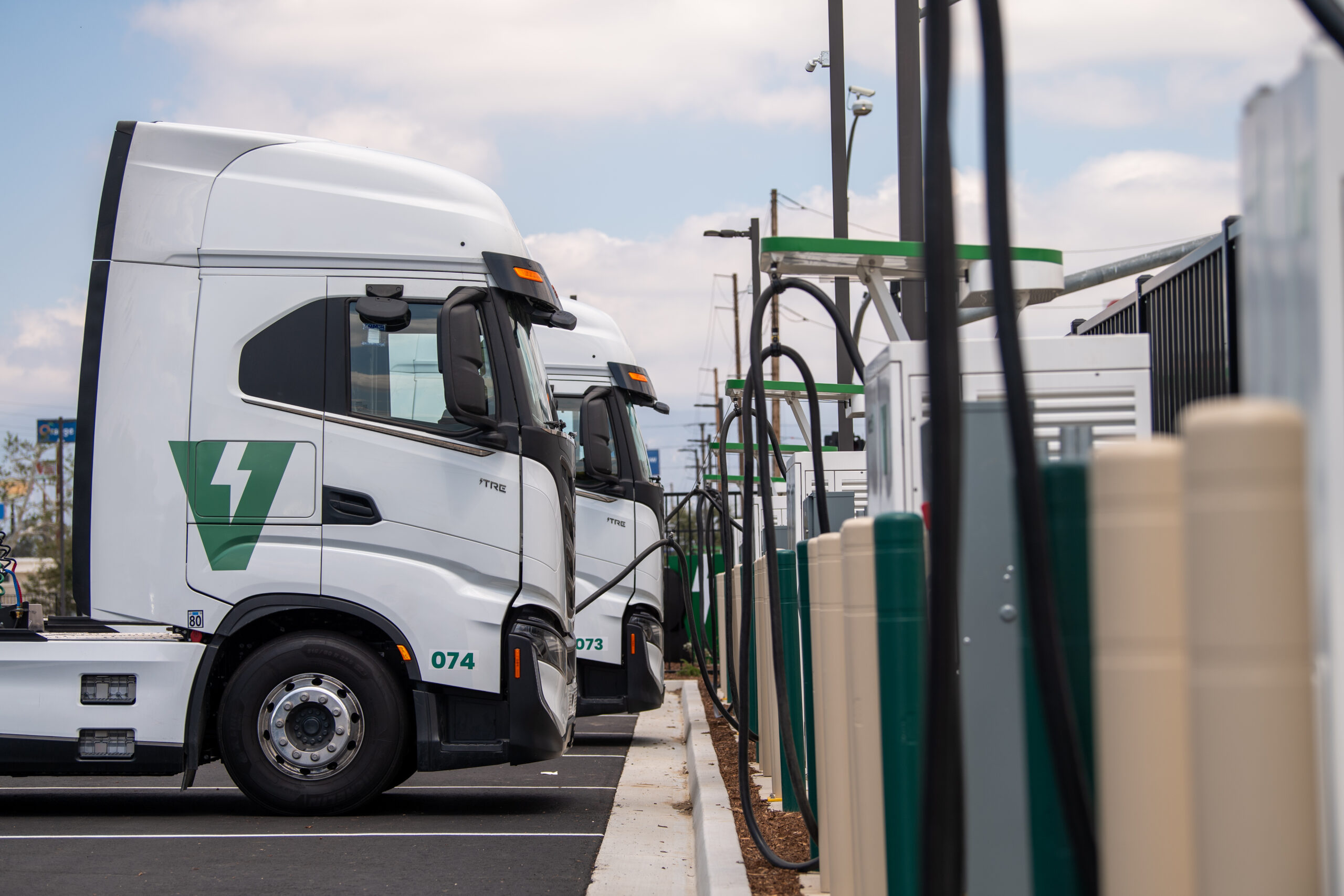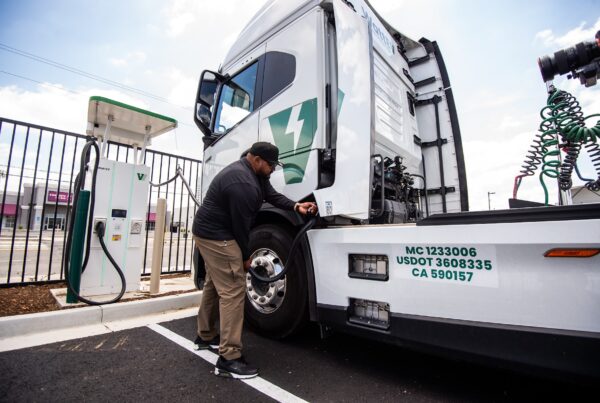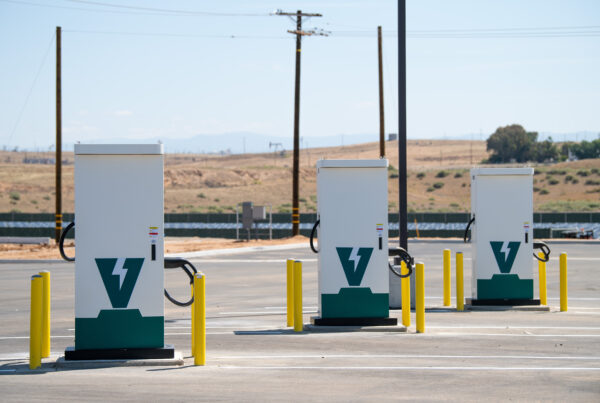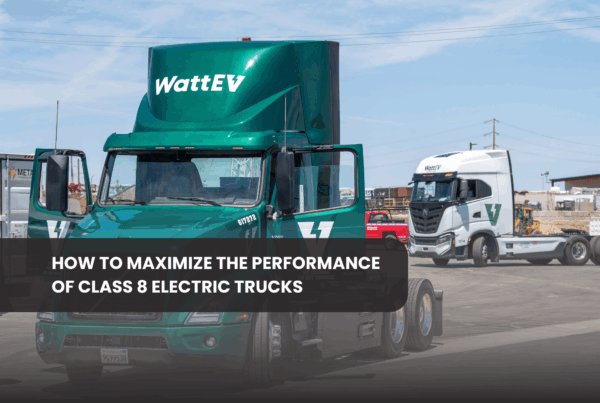The Road Ahead for Class 8 Electric Trucks
Electric truck adoption can be costly and complex for fleet operators. Truck-as-a-Service, or TaaS, removes those barriers by delivering Class 8 electric trucks, charging integration, maintenance, and telematics for one predictable monthly payment. TaaS lets fleets focus on moving freight while a single provider manages vehicles, charging, and uptime.
What is Truck-as-a-Service and how it works
Truck-as-a-Service is a subscription model where fleets gain access to electric trucks and the operational services they need under one commercial agreement. Instead of buying trucks or taking long-term leases, a fleet subscribes to a package that commonly includes vehicles, scheduled maintenance, battery monitoring, telematics, and access to managed charging infrastructure. The provider owns and operates the assets while the fleet pays a single monthly fee for equipment and service.
How it typically works:
- Fleets choose truck configurations and service levels that match routes and utilization.
- The TaaS provider supplies trucks, manages charging access, and performs maintenance and diagnostics.
- The fleet pays a predictable monthly subscription that covers vehicles, service, and often charging access.
- The fleet can scale up or down as demand changes without ownership risk.
TaaS compared to leasing and ownership
When deciding how to acquire electric trucks, fleets should weigh ownership, leasing, and TaaS.
Ownership
- Requires large upfront capital and exposes fleets to depreciation and resale risk.
- The fleet is responsible for charging infrastructure, maintenance, and battery end of life.
- Offers maximum control but greater financial burden.
EV Leasing
- Reduces initial capital outlay and provides fixed payments.
- Many leases do not include charging access or full-service maintenance.
- Offers payment predictability but limited turnkey support for electrification.
Truck-as-a-Service (TaaS)
- Requires no large upfront capital.
- Bundles trucks, charging access, maintenance, and telematics into one solution.
- Provides predictable monthly costs and flexible scaling tailored to utilization.
Benefits of Truck-as-a-Service for fleets
- Scalability, add or reduce vehicles quickly to match seasonal demand and new routes.
- Lower financial risk, predictable operating expense replaces uncertain capital exposure.
- Maintenance included, battery health monitoring, software updates, and scheduled service are part of the plan.
- Charging access and integration, access to depot charging and en-route high-power charging with managed schedules reduces downtime.
- Faster time to electrify, turnkey procurement and infrastructure reduce deployment time.
- Operational predictability, telematics and service level agreements improve uptime and lower unplanned costs.
The WattEV advantage
WattEV built a Truck-as-a-Service offering for heavy-duty fleets that need a turnkey path to electrification. WattEV combines trucks, charging, and support into a single commercial solution that reduces complexity and speeds adoption.
What WattEV provides:
- Bundled trucks and charging access, including high-power depots and managed charging-as-a-service.
- Full-service maintenance and telematics, with proactive diagnostics and battery monitoring.
- Flexible commercial terms with predictable monthly pricing and scalable contracts.
- Megawatt-ready infrastructure to support faster turnaround and higher asset utilization for long-haul operations.
Use cases and who benefits most
TaaS is ideal for operators that want low risk and rapid deployment. Typical beneficiaries include:
- Fleets testing electrification for the first time.
- Mixed-fuel fleets seeking predictable costs while scaling EVs.
- Regional and long-haul carriers that require managed charging access.
- Companies needing to meet clean truck rules quickly while preserving capital.
Truck-as-a-Service is the flexible path to fleet electrification. By bundling trucks, charging, maintenance, and telematics into one predictable commercial model, TaaS lowers financial risk and accelerates deployment for fleets of all sizes. WattEV’s TaaS offering pairs Class 8 electric trucks with managed charging and full-service support to help fleets electrify faster and operate with higher uptime.
Ready to lower risk and speed adoption with TaaS? Contact WattEV today to schedule a consultation and get a tailored TaaS plan.
FAQ
What is Truck-as-a-Service?
Truck-as-a-Service is a subscription model that provides electric trucks, managed charging, maintenance, and telematics for a monthly fee to accelerate fleet electrification.
Is TaaS better than leasing?
TaaS often provides more operational support than standard leasing because it includes charging access and full maintenance, making it a turnkey option for many fleets.
How does TaaS reduce total cost of ownership?
TaaS reduces total cost of ownership by converting capital expenditures into predictable operating expenses, including maintenance and charging, and by improving uptime through service agreements.
Can I scale my fleet up or down with TaaS?
Yes, TaaS contracts are designed to allow fleets to add or remove trucks as demand changes.




